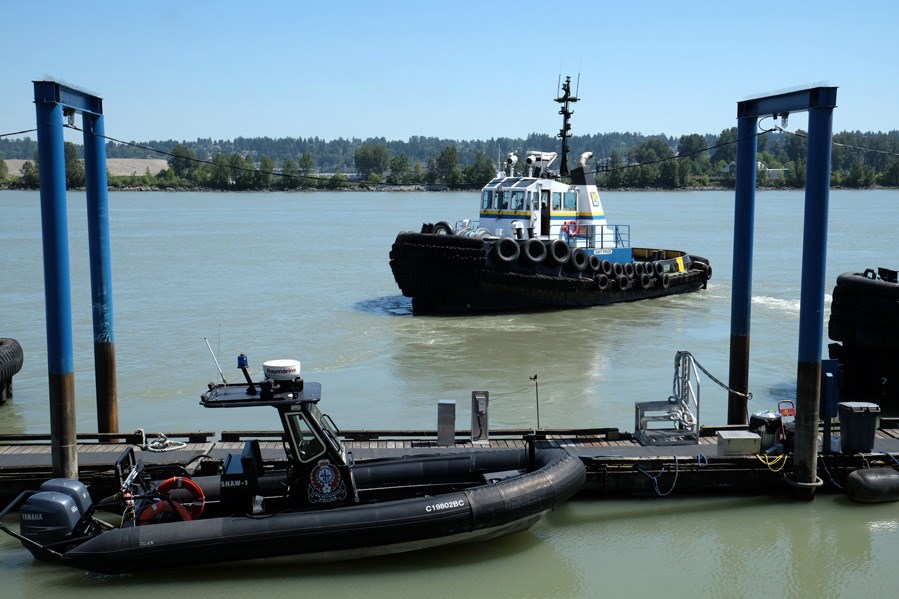After considering 18 options for the proposed Q2Q crossing, the city has lowered the bridge – and increased the odds of getting the plan approved.
Early drawings of the pedestrian bridge connecting Queensborough and the Quay showed a low-level crossing near the existing rail bridge. Those plans were changed when the Council of Marine Carriers expressed a need for the bridge to allow tugboats to pass freely through the north arm of the Fraser River, resulting in a taller bridge that included elevator towers on each side of the crossing.
“We have gone back to concepts that are very similar to the original proposal, which is a ground-level crossing,” said Mayor Jonathan Cote. “We have gone back in that direction for a few reasons. Mainly, we’ve heard the public input in terms of what the high-level crossing would do in terms of the visual impacts to the neighbourhood and the usability of the structure. We have also come to the conclusion that we are concerned that the high-level crossing that includes elevators would probably be beyond our financial means to make this project successful.”
On Monday, council endorsed a low-level crossing immediately downstream of the existing rail swing bridge as the new reference concept for the Q2Q pedestrian and bicycle bridge. Council directed staff to prepare a cost estimate for this concept.
Going back to the original concept comes with a risk because it doesn’t have the support of the Council of Marine Carriers, Cote said.
“We are going to continue having dialogue and working with them and Port Metro Vancouver through the regulatory process to demonstrate and alleviate the concerns they have,” he said. “In some respects, the lower level crossing might even be safer from a marine traffic point of view in that you won’t have cases where ships might have to judge if they need to raise the bridge or not.”
With the low-level crossing, the bridge would have to open for the vast majority of marine traffic.
“We have some work to do, but we think we should be able to demonstrate the safety of this bridge and how this pedestrian crossing can co-exist with the marine traffic that needs to use that channel,” Cote said.
In addition to supporting a low-level crossing, council directed staff to do some preliminary work on alternatives to a pedestrian crossing in case it encounters challenges in the regulatory process. That would include consideration of a connection between Queensborough and Quayside such as a small ferry and other alternatives.
Captain Phil Nelson, president of the Council of Marine Carriers, recently spoke with the Record about the city’s plan to build a crossing from the Quay to Queensborough.
“We are not against bridges per se, but the north arm of the river is our Trans-Canada Highway for the tugboat industry between New Westminster and the Strait of Georgia. There’s an awful lot of traffic through there,” he said. “Every time we have a new bridge put into place, it’s another obstruction our people have to negotiate and potentially another accident.”
Nelson said the existing rail crossing is a “difficult bridge to navigate” because the navigable channels have shifted as a result of silting in the river. He said the size of barges have increased since that bridge was built, which also makes it more complex and difficult to navigate through that area.
“Adding a pedestrian bridge at the end of the rail bridge, which is where it is planned on being put, is just increasing the risk that there’s going to be with that structure,” he said.
Nelson said there are a number of bridges and rail crossings over the Fraser River, and tugboats often have “heavy contact” with those bridges.
“It’s difficult to navigate through there as it is without adding another bridge into the mix,” he said.



